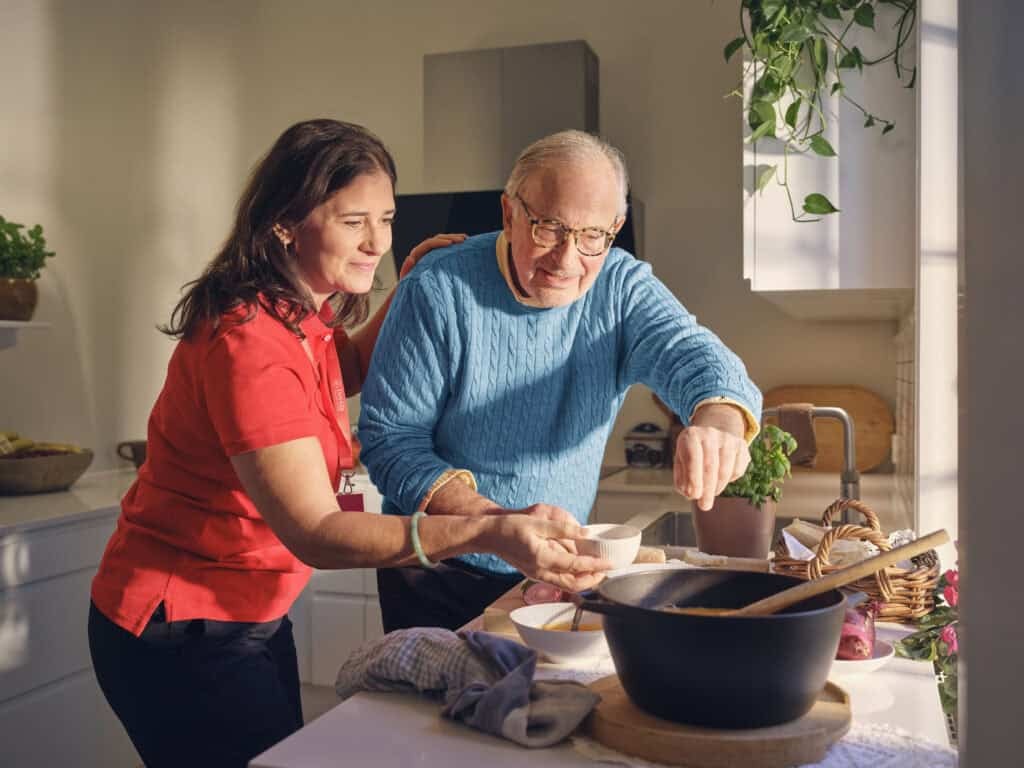Blog
22 October 2025
Preparing Your Home for Summer Safety: A Guide for Older Australians
As the warmer months approach, it’s worth taking some time to think about how to make your home as comfortable and safe as possible during the heat. With a few thoughtful adjustments, you can enjoy summer whilst staying healthy and well.
Understanding the Importance of Hydration
Staying hydrated becomes even more essential during summer. Water helps regulate your body temperature through sweating, which is particularly important when temperatures rise. You might notice that as you age, the sense of thirst isn’t always as reliable as it once was, so it’s helpful to be proactive about drinking fluids.
Generally, aiming for six to eight glasses of water a day is a good baseline, but you may need more during hot weather or if you’re physically active. Consider keeping a reusable water bottle within reach and refilling it throughout the day. Adding a slice of lemon or other fruit can make water more enjoyable to drink. Setting reminders on your phone or having a full glass of water when taking medications can help establish a regular hydration routine.
Dehydration can lead to confusion, tiredness, headaches, and dizziness. If you notice dark yellow or strong-smelling urine, or are urinating fewer than four times a day, these could be signs you need more fluids. Higher temperatures can increase the risk of heat-related illness, so maintaining good hydration is one of the most effective ways to stay well during summer.
Home Modifications for Warmer Weather
Creating a cooler environment at home doesn’t necessarily require major renovations.
Good ventilation is key – opening windows and doors in the early morning and evening when temperatures are lower can help create cross-ventilation. During the hottest part of the day, keeping curtains and blinds fully closed helps block out heat and reduces the impact of direct sunlight. Using block-out curtains or blinds can be particularly effective at regulating indoor temperatures and preventing shadows from trees and shrubs outside.
Consider which rooms in your home stay coolest and spend more time there during peak heat. If you have air conditioning or fans, ensure they’re in good working order before the heat arrives. For those without cooling systems, damp towels placed in front of fans or over windows can help cool the air.
UV protection matters indoors too, especially if you spend time near windows. The sun’s rays can still affect your skin through glass, so consider UV-protective window film or simply being mindful of prolonged sun exposure through windows.
Recognising Heat-Related Illness
Being aware of the warning signs of heat-related illness can make a real difference. Heat exhaustion symptoms include heavy sweating, weakness, tiredness, dizziness, headache, and nausea. If you experience these symptoms, it’s important to move to a cool place, drink water, and rest. Applying cool, damp cloths to your skin can also help.
More serious heat stroke requires immediate medical attention. Warning signs include confusion, disorientation, rapid pulse, hot and dry skin (despite the heat), and loss of consciousness. If you or someone else shows these symptoms, call emergency services straight away.
Creating a Summer Safety Plan
Some practical steps can help you stay safe and comfortable:
- Include water-rich foods like vegetables, fruits, and soups in your diet
- Avoid going out during the hottest part of the day (typically 11am to 3pm)
- Wear loose, light-coloured clothing when you do go outside
- Use a hat and sunscreen when outdoors
- Stay in touch with family, friends, or neighbours during heatwaves
- Keep emergency numbers easily accessible
